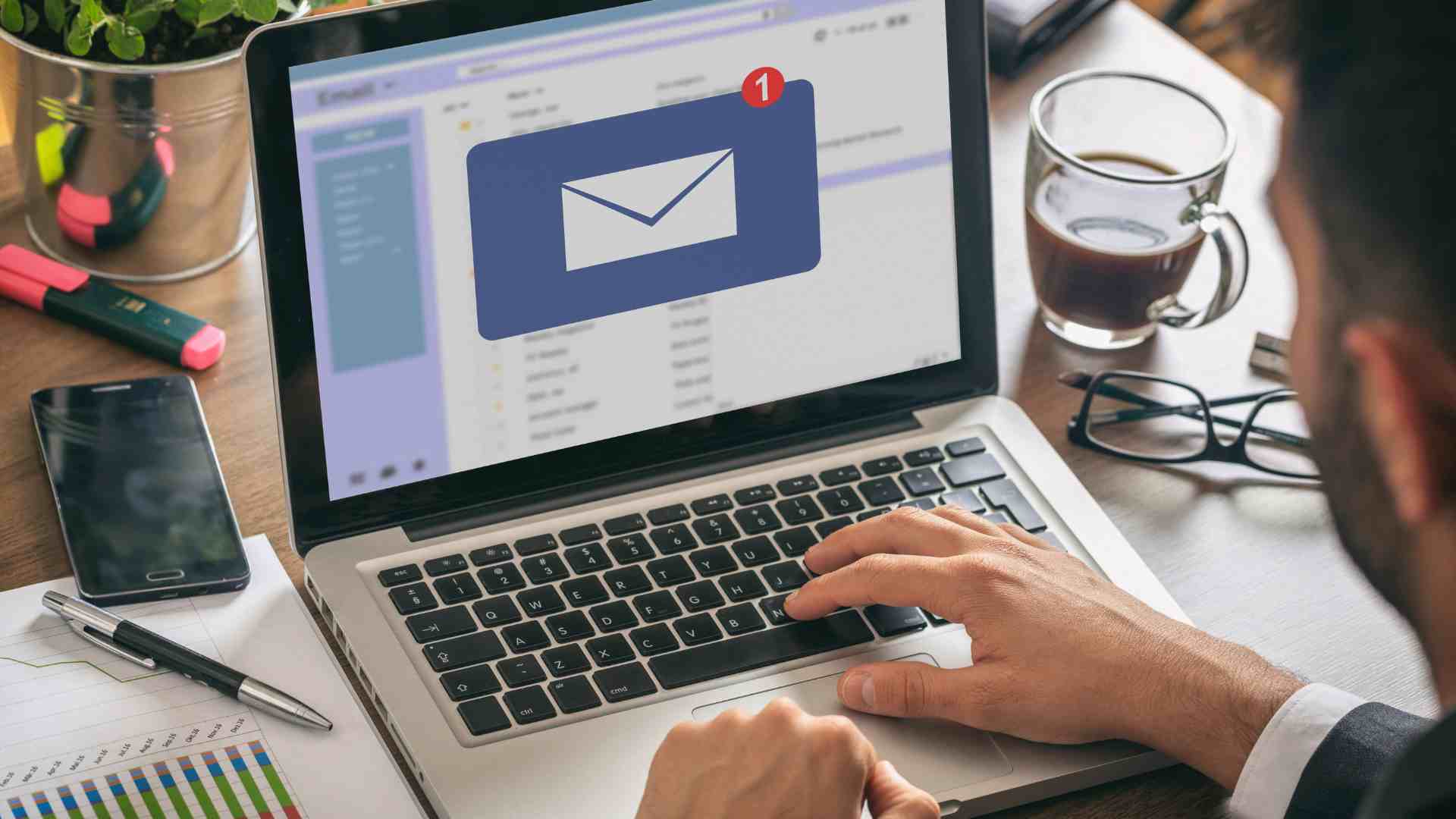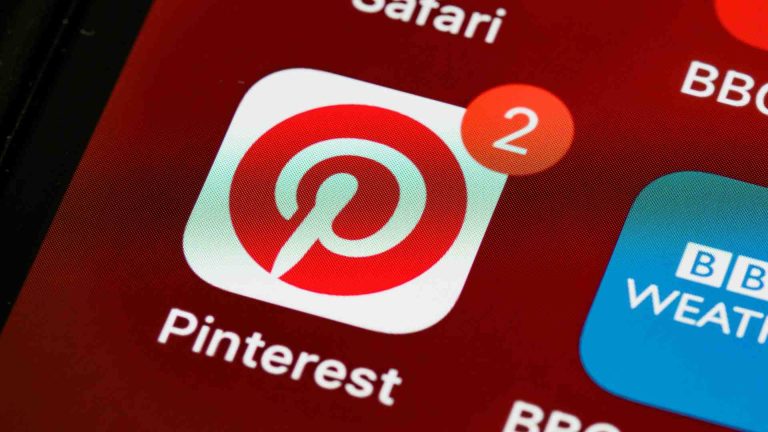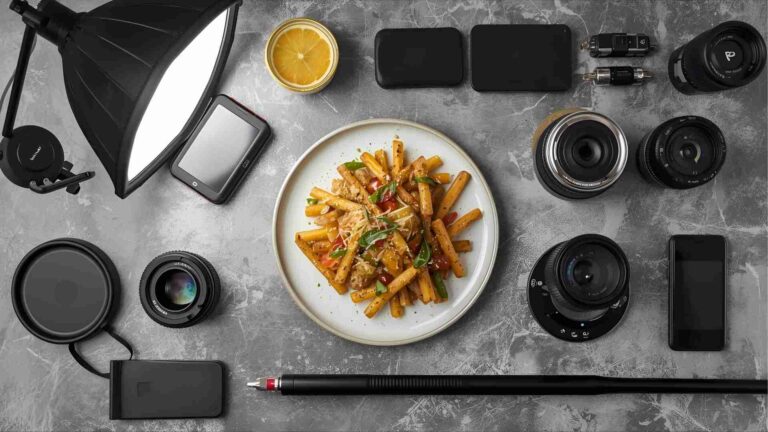Getting Started with Email Marketing for Food Bloggers
Email marketing is a cornerstone of success for food bloggers looking to grow their audience, deepen engagement, and monetize their content. Unlike social media platforms, where algorithms can limit your reach, email marketing offers a direct line to your readers, fostering loyalty and driving consistent traffic to your blog. This guide dives deep into the essentials of email marketing for food bloggers, providing actionable strategies, tools, and insights to help you build a thriving email community. From choosing the right platform to crafting compelling campaigns, we’ll cover everything you need to get started and succeed.
Why Email Marketing Matters for Food Bloggers
Email marketing stands out as a powerful tool for food bloggers because it allows you to own your audience. Social media platforms like Instagram, Pinterest, or Facebook are valuable for exposure, but they come with a catch: you’re at the mercy of their algorithms. If Instagram changes its feed or Pinterest tweaks its ranking system, your carefully curated posts might not reach your followers. Email, on the other hand, delivers your content straight to your subscribers’ inboxes, ensuring a reliable connection.
Here’s why email marketing is a must for food bloggers:
- Direct Communication: Emails bypass algorithmic gatekeepers, giving you a direct channel to engage with your readers.
- Higher Engagement: Email open rates often surpass social media engagement, with food blogging emails averaging 15-35% open rates, compared to Instagram’s 1-5% post visibility.
- Increased Website Traffic: Emails drive readers back to your blog, boosting page views and ad revenue.
- Monetization Opportunities: From affiliate links to brand partnerships, emails provide a platform to diversify your income streams.
- Community Building: Emails allow you to share personal stories and recipes, fostering trust and loyalty among your audience.
Imagine this scenario: your favorite social media platform shuts down overnight. Without an email list, you’d lose contact with your followers. With an email list, you have a lifeline to keep your community intact and continue sharing your recipes.
Step-by-Step Guide to Starting Your Email Marketing Journey
Getting started with email marketing doesn’t have to be overwhelming. By breaking it down into manageable steps, you can build a robust email strategy that aligns with your food blog’s goals. Here’s how to begin:
Step 1: Choose the Right Email Marketing Platform
Your email marketing platform is the backbone of your campaigns, so picking one that suits your needs is crucial. Several providers cater to bloggers, offering user-friendly interfaces and affordable plans. Below is a comparison of popular options:
| Platform | Free Plan | Paid Starting Price | Best For | Key Features |
|---|---|---|---|---|
| Mailchimp | Up to 500 contacts | $13/month | Beginners | Drag-and-drop editor, templates, basic automation |
| ConvertKit | Up to 300 contacts | $15/month | Content creators | Advanced automation, landing pages, segmentation |
| MailerLite | Up to 1,000 contacts | $10/month | Budget-conscious bloggers | Simple interface, pop-ups, affordable pricing |
| Flodesk | No free plan | $38/month | Design-focused bloggers | Stunning templates, unlimited subscribers |
| ActiveCampaign | No free plan | $29/month | Advanced users | CRM integration, detailed analytics, personalization |
Recommendation:
For beginners, Mailchimp’s free plan is a solid starting point due to its ease of use and generous contact limit. As you grow, consider switching to ConvertKit for its automation and segmentation capabilities, which are ideal for food bloggers looking to scale.
User Review:
“I started with Mailchimp because it was free and simple, but after hitting 2,000 subscribers, I switched to ConvertKit. The automation features saved me hours each week, and my open rates jumped from 12% to 25%.” Sarah, food blogger at Healthy Bites
Step 2: Set Up Your Email List
Once you’ve chosen a platform, it’s time to create your email list. Most providers guide you through this process, but here’s a quick overview:
- Create a List: In your platform’s dashboard, set up a new email list. Name it something clear, like “Food Blog Subscribers.”
- Add a Sign-Up Form: Embed a form on your blog to collect emails. Place it in high-traffic areas like your sidebar, homepage, or at the end of recipe posts.
- Customize the Form: Keep it simple—ask for a name and email address. Avoid requesting too much information, as it can deter sign-ups.
- Comply with Laws: Include a checkbox for consent (required by GDPR and CAN-SPAM) and provide a link to your privacy policy.
Pro Tip:
Use pop-up forms sparingly to avoid annoying readers. Time them to appear after 10-15 seconds or when a visitor shows intent to leave (exit-intent pop-ups).
Step 3: Create a Compelling Lead Magnet
A lead magnet, or “freebie,” is an incentive you offer in exchange for a reader’s email address. For food bloggers, lead magnets should align with your brand and solve a problem for your audience. Generic sign-up forms (e.g., “Join my newsletter”) rarely convert well—readers want something tangible.
Popular Lead Magnet Ideas for Food Bloggers
| Type | Example | Why It Works |
|---|---|---|
| Recipe eBook | “5 Easy Weeknight Dinners” | Compiles popular recipes in a convenient format, saving readers time. |
| Meal Plan | “7-Day Gluten-Free Meal Prep Guide” | Helps readers plan meals, appealing to busy or health-conscious audiences. |
| Checklist | “Pantry Staples for Quick Meals” | Provides practical value, encouraging sign-ups from home cooks. |
| Email Series | “5 Days to Master Vegan Baking” | Delivers bite-sized content over time, building trust and engagement. |
| Kitchen Tips Guide | “10 Hacks for Perfect Food Photos” | Appeals to aspiring food bloggers or photographers, niche but highly relevant. |
How to Create a Lead Magnet:
- Identify Popular Content: Use Google Analytics to find your top-performing blog posts. Look for common themes (e.g., healthy dinners, desserts) to base your freebie on.
- Design with Canva: Canva offers free templates for eBooks, checklists, and guides. Keep it simple—focus on value, not perfection.
- Repurpose Existing Content: Bundle your best recipes or tips into a PDF. For example, combine five popular Instant Pot recipes into an eBook with a shopping list.
- Set Up Delivery: Use your email platform to automatically send the freebie when someone signs up.
User Review:
“My ‘5 Cozy Fall Soups’ eBook took me two hours to make in Canva, using recipes already on my blog. It’s brought in 300 new subscribers a month!” Emma, food blogger at Cozy Kitchen
Step 4: Craft Your First Email Campaign
Your first email campaign sets the tone for your relationship with subscribers. A welcome series is an excellent starting point, as it introduces your brand and builds trust.
Anatomy of a Welcome Series
A welcome series typically consists of 3-5 emails sent over a week or two. Here’s a sample structure:
| Purpose | Content Example | |
|---|---|---|
| #1 | Welcome and deliver freebie | Thank the subscriber, deliver the lead magnet, and share your blog’s mission. |
| #2 | Share your story | Tell readers why you started your blog (e.g., a love for healthy eating). |
| #3 | Highlight top content | Link to your most popular recipes or posts (e.g., “My #1 chicken recipe”). |
| #4 | Offer value | Share a quick tip or recipe roundup (e.g., “3 ways to meal prep like a pro”). |
| #5 | Encourage engagement | Invite readers to follow you on social media or reply with their favorite cuisine. |
Writing Tips:
- Keep It Short: Aim for 100-200 words per email. Subscribers are busy—get to the point.
- Be Personal: Write like you’re chatting with a friend. Use “I” and “you” to create a connection.
- Include a Call-to-Action (CTA): Every email should have a clear action, like “Click to get the recipe” or “Save this meal plan.”
- Optimize for Mobile: Use a single-column layout and large fonts to ensure readability on smartphones.
Example Email:
Subject: Welcome to [Your Blog Name]! Here’s Your Freebie
Body:
Hi [Name],
I’m thrilled you’re here! I’m [Your Name], the food lover behind [Your Blog Name]. My mission is to share easy, delicious recipes that make your weeknights stress-free.
As promised, here’s your free [Lead Magnet Name]. [Button: Download Now]
In the next few days, I’ll share my favorite recipes and tips to help you cook with confidence. Got a favorite dish? Hit reply—I’d love to hear!
Happy cooking,
[Your Name]
Step 5: Promote Your Email List
To grow your list, you need to promote your lead magnet across multiple channels. Here are proven strategies:
On Your Blog:
- Add sign-up forms to your sidebar, footer, and within blog posts.
- Use a pop-up form with a clear value proposition (e.g., “Get my free eBook!”).
- Embed a “Save This Recipe” form at the end of recipes, allowing readers to receive the recipe via email.
On Social Media:
- Share your freebie in Instagram Stories with a link to your sign-up page.
- Pin a post on Pinterest linking to your lead magnet’s landing page.
- Post in relevant Facebook groups (with permission) to attract new subscribers.
Through Instagram Features:
- Use a “Link in Bio” tool like Grocers List to direct followers to your sign-up page.
- Leverage the “Comment for Recipe” feature, where followers comment a keyword (e.g., “recipe”) to receive a DM with a sign-up link.
Cross-Promote:
- Mention your email list in YouTube video descriptions or podcast show notes.
- Collaborate with other bloggers to promote each other’s freebies.
User Review:
“I was hesitant about pop-ups, but adding one for my ‘Keto Meal Plan’ doubled my sign-ups overnight. I also share it weekly on Instagram Stories, which brings in steady subscribers.” Mark, food blogger at Keto Cravings
Step 6: Send Regular Newsletters
Consistency is key to keeping your audience engaged. Aim to send 2-5 emails per month, depending on your capacity. Here are types of newsletters to consider:
| Type | Frequency | Content Ideas |
|---|---|---|
| Weekly Newsletter | Weekly | Feature new recipes, a meal prep tip, or a seasonal roundup (e.g., “Fall Desserts”). |
| Recipe Roundup | Monthly | Curate themed recipes (e.g., “Top 10 Pasta Dishes” or “Quick Weeknight Meals”). |
| Promotional Email | Occasionally | Share affiliate deals, cookbook launches, or brand partnerships. |
| “Saved Recipe” Email | As needed | Send readers a recipe they saved via a form, with links to related content. |
Best Practices:
- Timing: Send emails on Tuesday, Wednesday, or Thursday between 9-11 AM or 2-3 PM for optimal open rates.
- Subject Lines: Keep them catchy and under 40 characters (e.g., “Try My Viral Chicken Recipe!”).
- Content Mix: Follow the 80/20 rule—80% valuable content (recipes, tips), 20% promotional (affiliates, products).
- Track Metrics:
- Open Rate: Aim for 15-35% (food industry average).
- Click-Through Rate (CTR): Target 2% or higher.
- Unsubscribe Rate: Keep below 0.5%.
Example Metrics Table:
| Metric | Good Target | Your Goal |
|---|---|---|
| Open Rate | 15-35% | 20%+ |
| Click-Through Rate | 2%+ | 3%+ |
| Unsubscribe Rate | <0.5% | <0.3% |
Step 7: Optimize and Grow
As your email list grows, refine your strategy to maximize engagement and revenue. Here are advanced tips:
- Segment Your List: Group subscribers by interests (e.g., vegan recipes, quick meals) or behavior (e.g., frequent clickers). This boosts relevance and open rates.
- Automate Sequences: Set up evergreen sequences, like a “forever series” that sends your best content weekly.
- Clean Your List: Quarterly, remove inactive subscribers (those who haven’t opened in 90 days) to maintain deliverability.
- A/B Test: Experiment with subject lines, send times, or CTAs to see what resonates.
-
Monetize Strategically:
- Include affiliate links for kitchen tools or ingredients.
- Pitch email blasts as a bonus to brand partners.
- Promote your own products, like cookbooks or courses.
User Review:
“Segmenting my list by dietary preferences was a game-changer. My gluten-free subscribers now get tailored emails, and my open rates climbed to 30%.” Rachel, food blogger at Gluten-Free Gourmet
Common Challenges and How to Overcome Them
Email marketing can feel daunting, but most hurdles are manageable with the right approach. Here are common concerns and solutions:
| Challenge | Solution |
|---|---|
| “I don’t know what to say.” | Start with a new recipe or repurpose old content (e.g., “5 Best Soups”). |
| “It feels too technical.” | Use beginner-friendly platforms like Mailchimp and follow their tutorials. |
| “I’m worried about unsubscribes.” | Focus on quality over quantity—unsubscribes mean you’re refining your list. |
| “I don’t have time.” | Batch-write emails monthly and automate sequences to save time. |
| “My list isn’t growing fast enough.” | Promote your freebie consistently and test new lead magnets. |
Real-World Success Stories
To inspire you, here are two examples of food bloggers who leveraged email marketing effectively:
Liz from The Clean Eating Couple:
- Strategy: Liz started with a simple RSS feed but transitioned to custom emails with a paleo crockpot eBook as her lead magnet. She emails 3-4 times weekly, mixing recipes, tips, and affiliate promotions.
- Results: Her email list drives consistent traffic, boosts affiliate income, and strengthens brand partnerships. Her welcome series alone converts 20% of subscribers into loyal readers.
“Email marketing gave me control over my audience. It’s my safety net when social media fails.”
Jessica from Real Food Dietitians:
- Strategy: Jessica’s team switched from Mailchimp to ConvertKit, pruning their list from 125,000 to 58,000 for better engagement. They use a 5-email welcome series and a weekly “forever series” to share top content.
- Results: Open rates soared to 30%, and their automated sequences ensure steady traffic even during breaks.
“A smaller, engaged list is worth more than a big, silent one. ConvertKit made that clear.”
Tools to Enhance Your Email Marketing
Beyond email platforms, these tools can streamline your efforts:
| Tool | Purpose | Price |
|---|---|---|
| Canva | Design lead magnets and email visuals | Free/$12.99/month |
| WPForms | Create sign-up forms for WordPress | $39.50/year |
| Grocers List | Instagram-to-email integration | Free/Paid plans |
| Google Analytics | Track blog performance for freebies | Free |
How to Grow Your Email List Faster
1. Promote Your Freebie Everywhere
- Pinterest (Create a pin linking to your sign-up page)
- Instagram (Link in bio + Stories)
- Facebook Groups (Where allowed)
- YouTube (Mention in videos)
2. Run a Giveaway
Partner with a brand (e.g., a kitchen tool) and require email sign-ups to enter.
3. Use “Content Upgrades”
Offer a bonus download within blog posts (e.g., “Download the printable recipe card below”).
4. Collaborate with Other Bloggers
Guest post or do a joint freebie swap to cross-promote lists.
Monetizing Your Email List
1. Affiliate Marketing
- Promote Amazon kitchen tools
- Share Thrive Market or ButcherBox discounts
- Recommend meal delivery services (e.g., HelloFresh)
Example:
“This Instant Pot changed my cooking game—get it here (affiliate link)!”
2. Sponsored Newsletters
Brands pay for dedicated emails. Charge 200$ – 2,000$ depending on list size.
3. Sell Digital Products
- Meal plans (10$–50$)
- Cookbooks (20$–50$)
- Online courses (100$–500$)
Final Thoughts: Start Today, Grow Tomorrow
Email marketing is a game-changer for food bloggers, offering a direct, reliable way to connect with your audience and grow your blog. By choosing the right platform, creating a valuable lead magnet, and sending consistent, engaging emails, you can build a loyal community that keeps coming back for your recipes. Don’t let technical fears or time constraints hold you back—start small, experiment, and refine as you go.
Action Plan:
- Sign up for a free email platform like Mailchimp or ConvertKit.
- Create a lead magnet based on your most popular recipes.
- Add a sign-up form to your blog and promote it on social media.
- Send your first welcome email this week.
- Track your open rates and tweak your strategy monthly.
As Liz from The Clean Eating Couple says, “My only regret is not starting sooner.” Take the leap today, and watch your food blog thrive through the power of email marketing.
Please share this Getting Started with Email Marketing for Food Bloggers with your friends and do a comment below about your feedback.
We will meet you on next article.
Until you can read, SEO for Food Bloggers: Get More Traffic & Better Rankings






